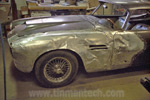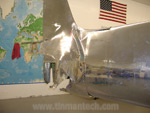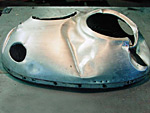The History of Automotive Aluminum
The History of Automotive Aluminum
From Automotive Body Repair, November 1995
See TM Technologies Aluminum Gas Welding System
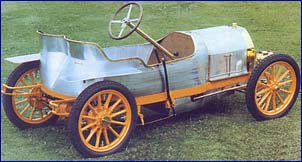
1908 Bugatti Type 10 with aluminum body.
First discovered in the early 1800s, produced in quantity in 1824, then reliably cast, rolled and formed by the turn of this century, aluminum was quickly put into use by automobile producers. It appeared on motorcars as early as the 1908 Bugatti, whose construction included extensive aluminum sand castings and formed aluminum body panels that were butt-welded with the use of the oxy-fuel torch and hand-worked to a polished condition. Pierce Arrow bodies were cast for several years-from 1912 until 1917 or 1918. These cast bodies were actually enormous sand castings and they showed evidence, in some cases, of very large oxy-fuel torch welds. The casting thickness was between 1/4 and 3/8 in. thick, and the bodies were of good appearance, durable and structurally sound.
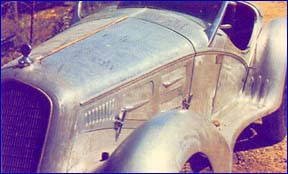
1934 Alfa Romeo 8C2300 with aluminum Touring Carrozzeria body. This Alfa was outfitted with an aluminum supercharged inline 6-cyl. with twin overhead cams, and was a Grand Prix racing car that was rebodied after the season was over.
Aluminum remained a choice for limited production cars until the 1960s because it was more easily formed than steel and tooling could be more cheaply and easily made. The alloys in those days were principally purer forms- 1100 and 3003- which did not lend themselves to corrosion, so the aluminum survived for decades.

